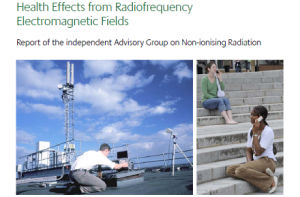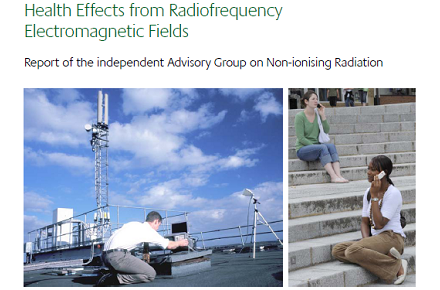A new report by the Health Protection Agency’s independent Advisory Group on Non-ionising Radiation (AGNIR) has concluded that there is still no convincing evidence that mobile phone technologies cause adverse effects on human health.
 |
| [relatedPosts title=”Related Posts”] |
|
|
The report, which updates AGNIR’s previous review in 2003, considers the scientific evidence on exposure to radiofrequency (RF) electromagnetic fields, which are produced by mobile phone technologies and other wireless devices, such as Wi-Fi, as well as television and radio transmitters.
The report finds that although a substantial amount of research has been conducted, there is no convincing evidence that RF field exposure below internationally agreed guideline levels (which are applied in the UK) causes health effects in adults or children.
Key conclusions are:
- The evidence suggests that RF field exposure below guideline levels does not cause symptoms in humans and that the presence of RF fields cannot be detected by people, including those who report being sensitive to RF fields.
- A large number of studies have now been published on cancer risks in relation to mobile phone use. Overall, the results of studies have not demonstrated that the use of mobile phones causes brain tumours or any other type of cancer.
- As mobile phone technology has only been in widespread public use relatively recently, there is little information on risks beyond 15 years from first exposure. It is therefore important to continue to monitor the evidence, including that from national brain tumour trends. These have so far given no indication of any risk.
- Studies of other RF field exposures, such as those at work and from RF transmitters, have been more limited but have not given evidence that cancer is caused by these exposures.
- Research on other potential long-term effects of RF field exposures has been very limited, but the results provide no substantial evidence of adverse health effects; in particular for cardiovascular morbidity and reproductive function.
Professor Anthony Swerdlow, Chairman of the Group, concluded:
“There are still limitations to the published research that preclude a definitive judgment, but the evidence overall has not demonstrated any adverse effects on human health from exposure to radiofrequency fields below internationally accepted guideline levels.”
In response, the Health Protection Agency welcomed the report’s findings.
Dr John Cooper, director of the HPA’s Centre for Radiation, Chemical and Environmental Hazards, said:
“There has been considerable new scientific evidence published since the last AGNIR report in 2003, and this report further consolidates the evidence base on which the HPA issues its advice.
“The HPA’s position on mobile phone technologies is in line with the AGNIR’s findings. There is still no convincing scientific evidence that RF field exposures from mobile phones and other radio technologies affect human health at exposure levels below internationally agreed guidelines.
“However, as this is a relatively new technology, the HPA will continue to advise a precautionary approach and keep the science under close review. The HPA recommends that excessive use of mobile phones by children should be discouraged and mobile phone Specific Energy Absorption Rates (SAR) values should be clearly marked in the phone sales literature.”
Further Information
- The report: Health Effects from Radio Frequency Electromagnetic Fields is available at here.
- AGNIR reviewed laboratory studies of cells and animals as well as experiments in humans and observational (epidemiological) studies of humans.
- The Health Protection Agency’s full response can be viewed here.
- The International Commission on Non-Ionizing Radiation Protection sets human exposure guidelines for radiofrequency electromagnetic fields, including those from mobile phones: http://www.icnirp.org/. These guidelines have been incorporated into standards and recommendations that have been adopted throughout Europe.
- Radiofrequency refers to the parts of the electromagnetic spectrum that can be readily used for radio communications purposes and which lie below the infrared region: specifically, for this document, frequencies in the range of 100 kHz to 300 GHz.
- The term radio wave denotes a radiofrequency electromagnetic field that is transmitted from a source for communications purposes, while the term microwave can be used to refer to radio waves with frequencies between 300 megahertz and 300 gigahertz.
- SAR values are measured when mobile phones are manufactured and compared with restriction values from the ICNIRP guidelines. They are a measure of the maximum energy absorption rate of radio energy that can occur in a user’s head and are limited to 2 watts per kilogram averaged over any 10 grams of tissue.
.





